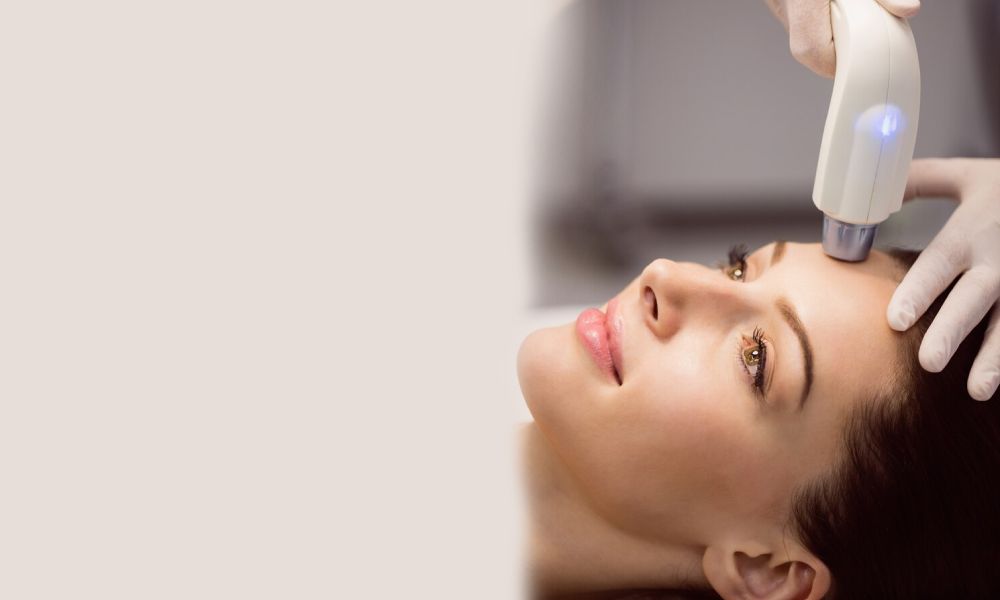Pigmentation issues can be a nuisance, but with modern treatments, you can achieve clear, even-toned skin. Are you considering pigmentation removal treatments in Melbourne? If so, you’re probably eager to know what kind of long-term results you can expect and how to keep your skin looking its best after treatment. Pigmentation issues can be more than just a cosmetic concern; they can affect your confidence and self-esteem. So, let’s dive into what these treatments can do for you and how to maintain those beautiful results.
In this article, we’ll take a deep dive into the long-term effects of pigmentation removal treatments and offer practical tips on how to preserve your results.
What Is Pigmentation and What Causes It?
Pigmentation refers to the color of your skin, which is determined by a pigment called melanin. When melanin is produced in excess or in uneven patches, it can result in darker areas of skin, commonly known as hyperpigmentation. Common forms of hyperpigmentation include:
- Sunspots (age spots or liver spots), which develop from prolonged sun exposure.
- Melasma, often triggered by hormonal changes, pregnancy, or birth control.
- Post-inflammatory hyperpigmentation, which can occur after an injury or acne breakout.
Factors like genetics, UV exposure, hormonal fluctuations, and inflammation can all contribute to pigmentation issues.
Popular Pigmentation Removal Treatments
To address these concerns, a variety of pigmentation removal treatments are available. Here are some of the most commonly used options:
1. Laser Treatments
Laser treatments, such as fractional CO2 lasers or Q-switched lasers, work by targeting the pigment in your skin. The laser breaks down the melanin in the pigmented areas, which the body then absorbs and eliminates naturally over time.
2. Chemical Peels
Chemical peels use acids like glycolic or salicylic acid to exfoliate the outer layers of your skin. This process removes dead skin cells and can fade dark spots and uneven pigmentation, giving your skin a smoother and more uniform appearance.
3. Intense Pulsed Light (IPL)
IPL treatments use broad-spectrum light to target pigmentation at multiple depths of the skin. It’s effective in treating surface-level pigmentation like sunspots and freckles, as well as deeper pigmentation concerns like melasma.
4. Topical Treatments
Topical treatments with ingredients like hydroquinone, retinoids, and vitamin C can be used to lighten dark spots over time. These can be used as standalone treatments or in conjunction with other therapies for more significant results.
How Effective Are Pigmentation Removal Treatments?
Pigmentation removal treatments can be highly effective, depending on the type of pigmentation you’re dealing with and the treatment you choose. For instance:
- Laser treatments often offer quick and noticeable results for more stubborn pigmentation, like melasma or sunspots. After a few sessions, many patients experience a significant reduction in pigmentation.
- Chemical peels and IPL also offer great results for mild to moderate pigmentation issues, though multiple sessions may be needed for optimal outcomes.
- Topical treatments tend to be slower but are still highly effective for addressing minor pigmentation concerns and maintaining long-term results.
That said, results can vary from person to person, and it’s essential to follow your dermatologist’s guidance to achieve the best possible outcome.
What Are the Long-Term Results of Pigmentation Removal?
Once you’ve completed your pigmentation removal treatment, you may be wondering how long the results will last. While the effects of pigmentation removal treatments can be long-lasting, they are not necessarily permanent. The longevity of your results will depend on several factors:
1. Improved Skin Tone
For many people, pigmentation removal treatments lead to a more even skin tone, with dark spots and patches significantly lightened or eliminated. After treatment, you may notice smoother skin with a radiant glow. However, it’s important to note that new pigmentation can develop, especially if you continue to expose your skin to the sun without protection.
2. Reduced Risk of Recurrence
Some types of pigmentation, such as sunspots or melasma, can recur over time, especially if the underlying cause (like sun exposure or hormonal fluctuations) is not managed. In general, laser treatments and chemical peels provide long-term improvements, but they may not prevent new spots from forming. Maintaining proper sun protection is essential to preserve your results.
3. Boosted Skin Health
In addition to removing pigmentation, treatments like chemical peels and laser resurfacing often stimulate collagen production, improving overall skin texture and reducing fine lines and wrinkles. Over time, these treatments may lead to healthier, more youthful-looking skin in addition to reducing pigmentation.
How to Maintain Your Pigmentation Removal Results
To make sure you maintain the results of your pigmentation removal treatment, it’s crucial to follow a proper skincare routine and lifestyle changes. Here are some tips for keeping your skin healthy and pigmentation-free:
1. Use Sunscreen Daily
Sun protection is the most important factor in maintaining the results of pigmentation removal. UV exposure can trigger the production of melanin, leading to the recurrence of pigmentation spots. Apply a broad-spectrum SPF 30 or higher sunscreen every day, even on cloudy days, and reapply throughout the day if you’re outdoors.
2. Avoid Direct Sun Exposure
Even with sunscreen, it’s wise to avoid prolonged sun exposure. Wear protective clothing, hats, or sunglasses, and seek shade when possible. If you’re on vacation or spending time outdoors, take extra precautions to protect your skin.
3. Use Brightening or Lightening Products
After your treatment, continue using products that help lighten dark spots and even out your skin tone. Look for ingredients like vitamin C, niacinamide, retinoids, and alpha hydroxy acids (AHAs) to gently exfoliate the skin and keep pigmentation at bay.
4. Follow a Consistent Skincare Routine
Adopt a skincare routine that includes gentle cleansing, exfoliation, and moisturizing to maintain skin health. Avoid harsh products that may irritate the skin, as irritation can trigger pigmentation.
5. Schedule Maintenance Treatments
Some people choose to undergo maintenance treatments after their initial round of pigmentation removal. These treatments may be less frequent (every 6 months to a year), but they help keep pigmentation at bay and ensure long-lasting results.
What Happens If You Don’t Maintain Your Results?
If you neglect to maintain your results after pigmentation removal treatment, there’s a higher chance that new pigmentation could develop. Sun exposure, hormonal changes, and skin irritation can all contribute to the recurrence of dark spots. Without proper aftercare, you may lose the benefits of your treatment over time. In some cases, untreated pigmentation can become more pronounced, leading to the need for additional treatments.
Other Tips to Improve and Maintain Skin Health
To get the most out of your pigmentation removal treatment, consider incorporating the following tips into your daily routine:
- Stay hydrated: Drinking plenty of water helps maintain skin elasticity and health.
- Eat a healthy diet: Foods rich in antioxidants, such as fruits and vegetables, can promote skin healing and improve overall skin health.
- Avoid smoking: Smoking accelerates skin aging and can contribute to pigmentation and other skin concerns.
- Get enough sleep: A good night’s rest allows your skin to repair and rejuvenate, keeping it healthy and glowing.
Frequently Asked Questions (FAQs)
1. How long do pigmentation removal treatments last?
The results of pigmentation removal treatments can last anywhere from 6 months to several years, depending on the type of treatment and your lifestyle. However, pigmentation can recur if proper maintenance is not followed.
2. Can pigmentation come back after treatment?
Yes, pigmentation can return if you’re not careful with sun exposure or if other triggers like hormones or skin irritation are present. Protecting your skin from the sun is crucial to maintaining your results.
3. How many sessions do I need for pigmentation removal?
Most people need a series of 3 to 6 treatments for optimal results, depending on the severity of the pigmentation and the type of treatment used.
4. Are there any side effects of pigmentation removal treatments?
Side effects are generally minimal but can include redness, swelling, or mild discomfort, which usually subside within a few
Conclusion
The long-term results of pigmentation removal treatments can be highly satisfying, offering clearer, more even skin. However, these results are not permanent, and proper maintenance is key to ensuring your skin remains pigmentation-free. By following a dedicated skincare routine, using sunscreen, and scheduling maintenance treatments, you can preserve the benefits of your pigmentation removal treatment and enjoy youthful, radiant skin for years to come.





